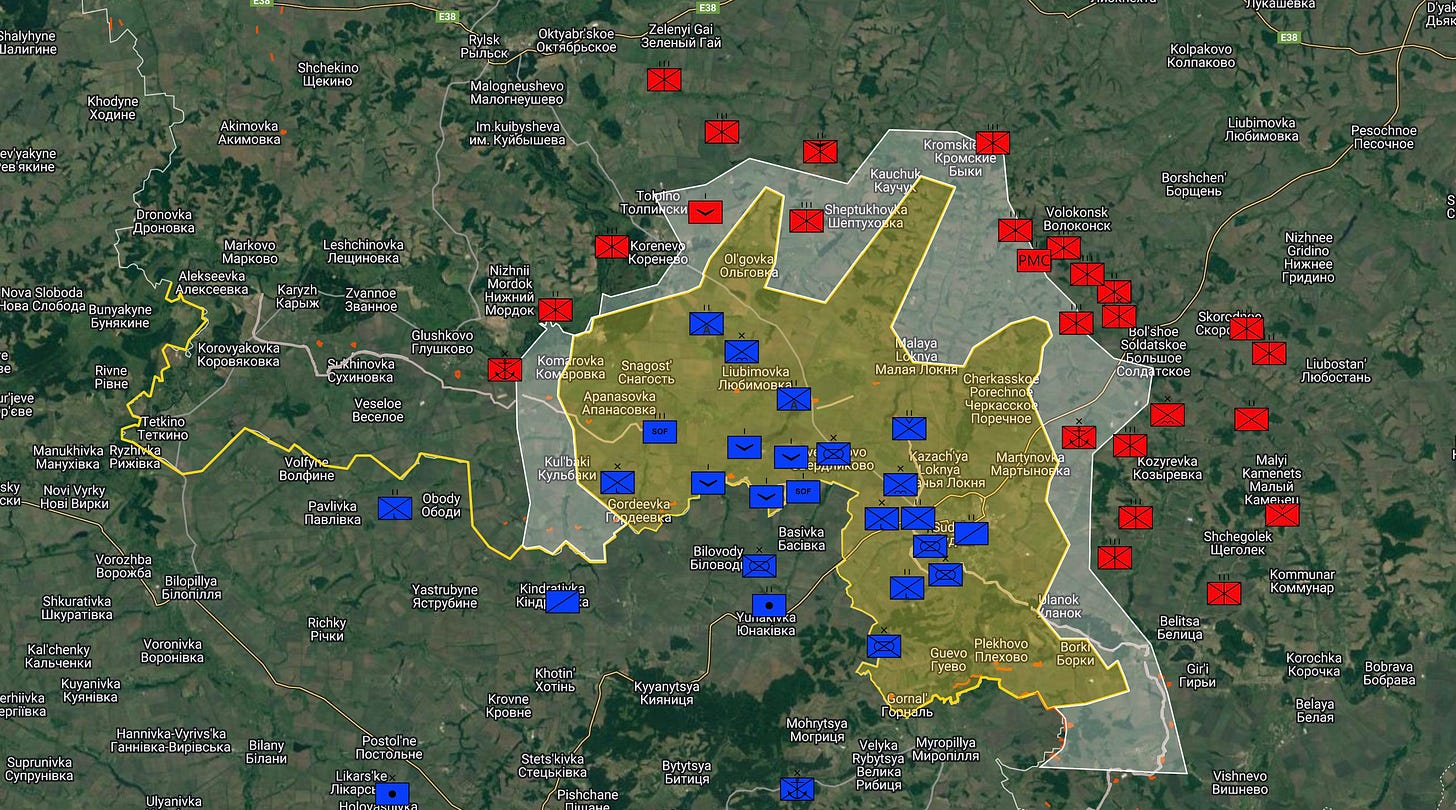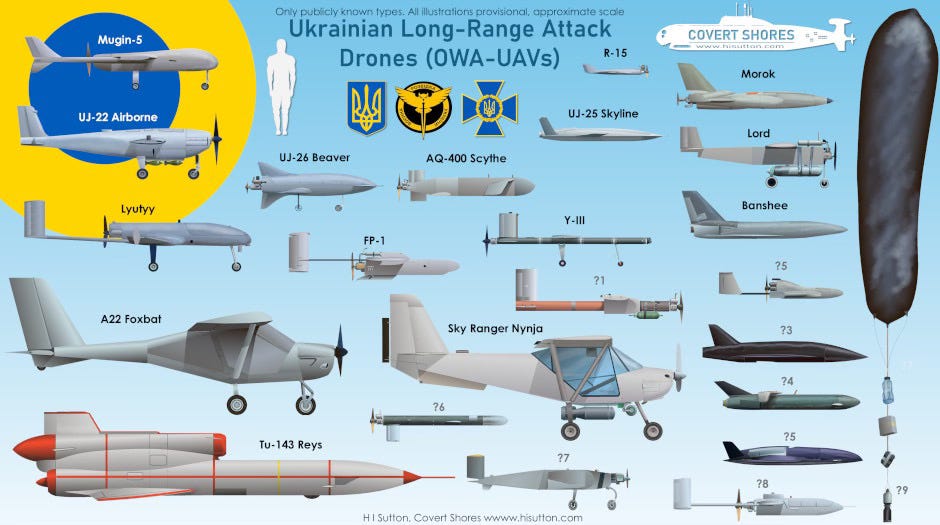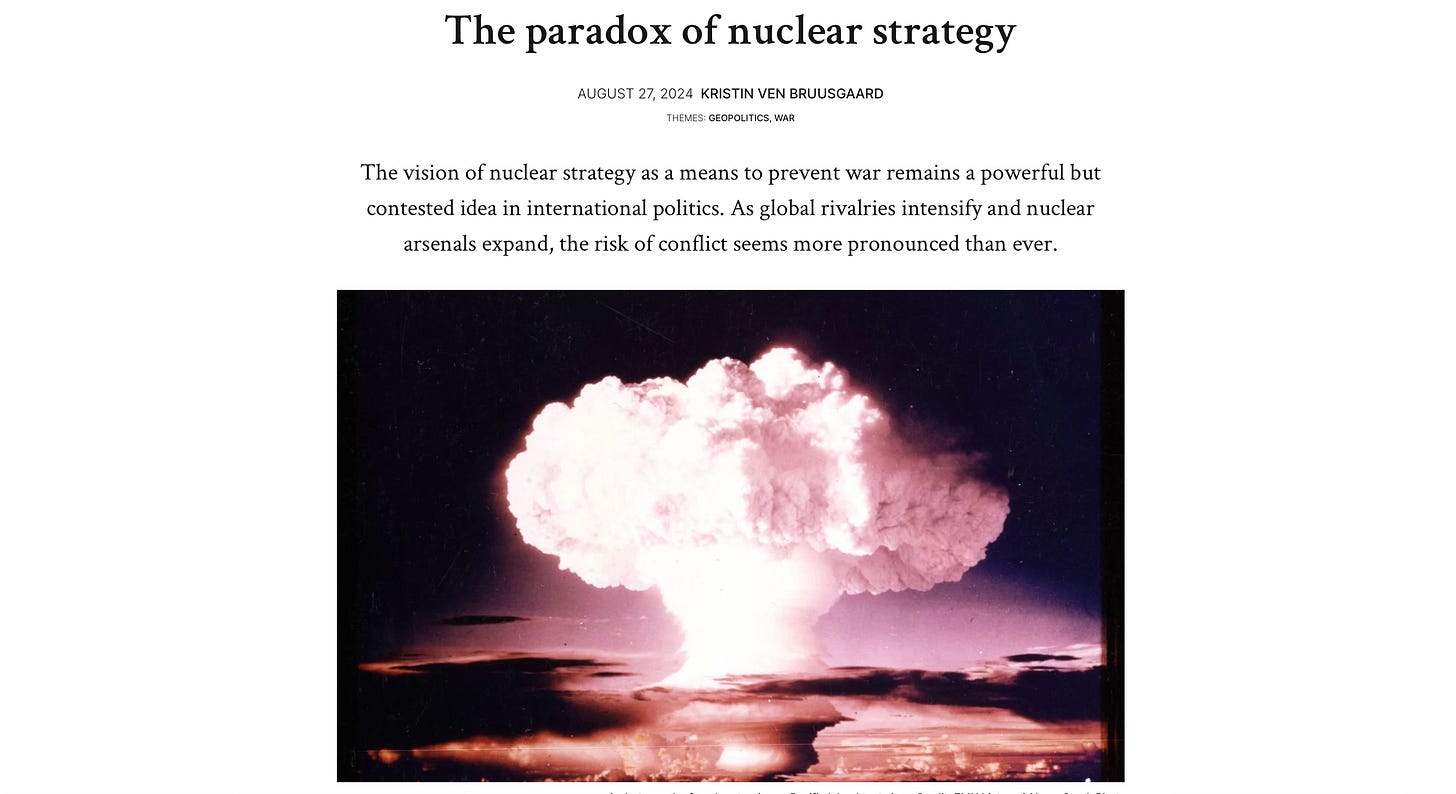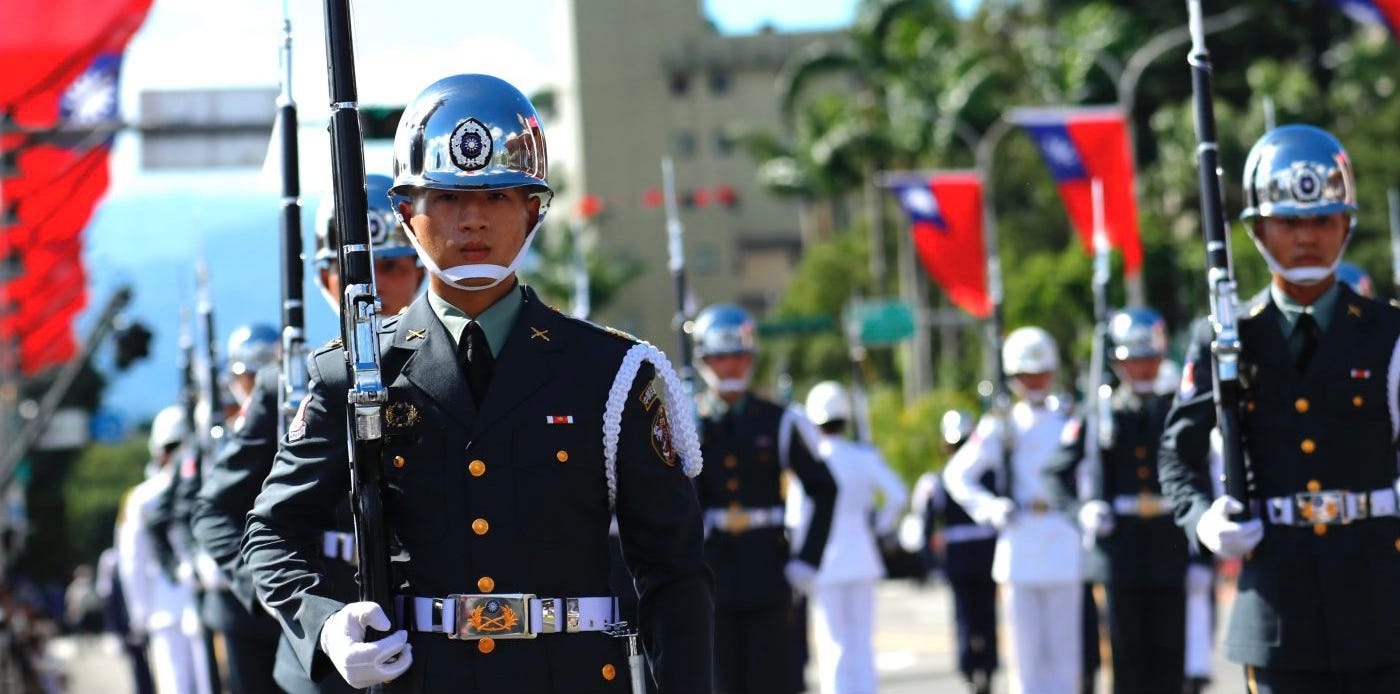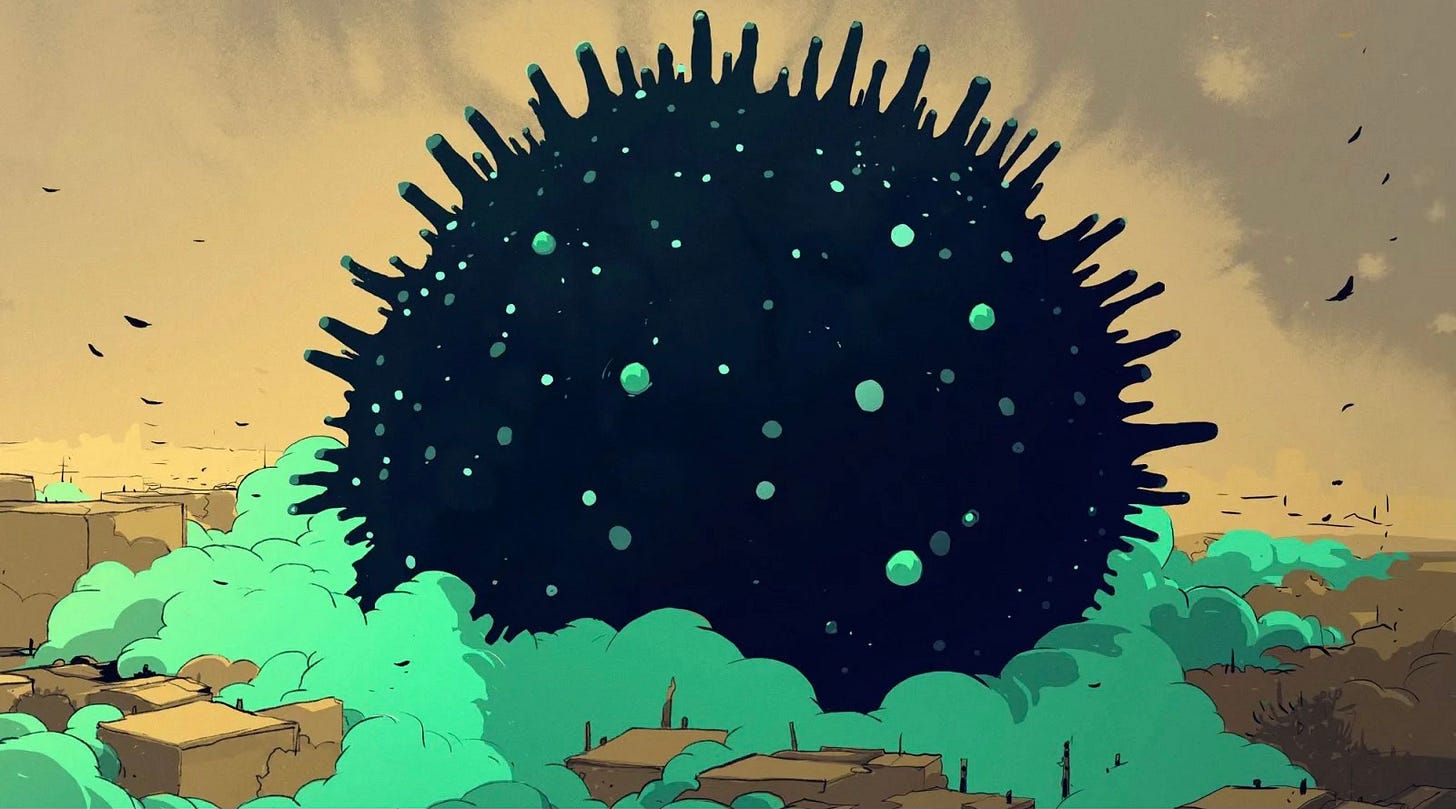The Big Five - 30 August edition
My regular update on conflict and confrontation in Ukraine, the Middle East and the Pacific, accompanied by recommended readings on the character of modern war and planning for future conflict.
Another hectic and interesting week.
In Russia, Ukraine’s Kursk campaign continues although advances in the past week have been fewer than in the initial part of their post-break through exploitation operations. Russia’s response has gathered momentum. More ground forces have been deployed there, and the Russian Air Force is also in action using its destructive glide bombs against Ukrainian forces in Kursk.
While there have been some small advances, the Ukrainian incursion appears to have reached - or is close to reaching - the ‘limit of exploitation’ that I discussed in this article back on 12 August. In that piece, I examined what Ukraine’s options were once that occured. These include defending all terrain seized in Kursk, selecting defendable terrain and withdrawing into that, and withdrawing back into Ukraine altogether. It appears that the second option is most likely at this point.
The real question is this: how does Ukraine ensure this military advance and seizure of Russian territory results in political and strategic advantage? While there is an argument that the offensive has seized the initiaitve for Ukraine and changed the status quo of the war, given the tradeoffs they have had to make in defending in the Donbas, the political and strategic returns on the Kursk offensive are yet to fully materialise.
This week, debate also continued over whether the U.S. would change its policy on the use of its weapons for long-range strikes inside Russia. One observation of the situation, made by the Lithuanian Foreign Minister Gabrielius Landsbergis was that “Russian planes are better protected by Western guarantees than Ukrainian civilians.”
Disingenious responses from U.S. officials that the weapons would not be that effective because the Russians have moved their planes overlook the obvious fact that the Ukrainians had the weapons well before the aircraft in question were moved. If Ukraine had the full permission to use the weapons from the beginning, the planes would have had a good chance of being smoking wrecks at their original airfields.
While Ukraine seeks to change American policy on the use of long-range strike weapons in Russia, they have continued to develop indigenous solutions to attack a variety of targets in Russia. President Zelenskyy revealed this week that Ukraine has developed its own ballistic missile which has now been successfully tested. Earlier this month he also unveiled a long-range strike missile, which is named the Palianytsia.
For a full wrap up on Ukraine’s indigenous strike systems, I recommend following H.I. Sutton and his Covert Shores site. One of the excellent images from the site, showing Ukraine’s drone fleet, is below. These are regularly updated when new drones are detected or announced.
Also in Russia, the Russian military has been frantically expanding and improving its defensive works as a hedge against further Ukrainian advances in Russia. At least according to doctrine, defensive zones are sited to leverage existing natural features and also along anticipated future axes of advance by an enemy force to achieve ‘turn, disrupt, block or fix’ them. This is may be how the Russians are thinking, but in war, you can never be sure! Anyway, check out Brady Africk’s updated geospatial products that examines and charts Russian developments in their Kursk defensive works.
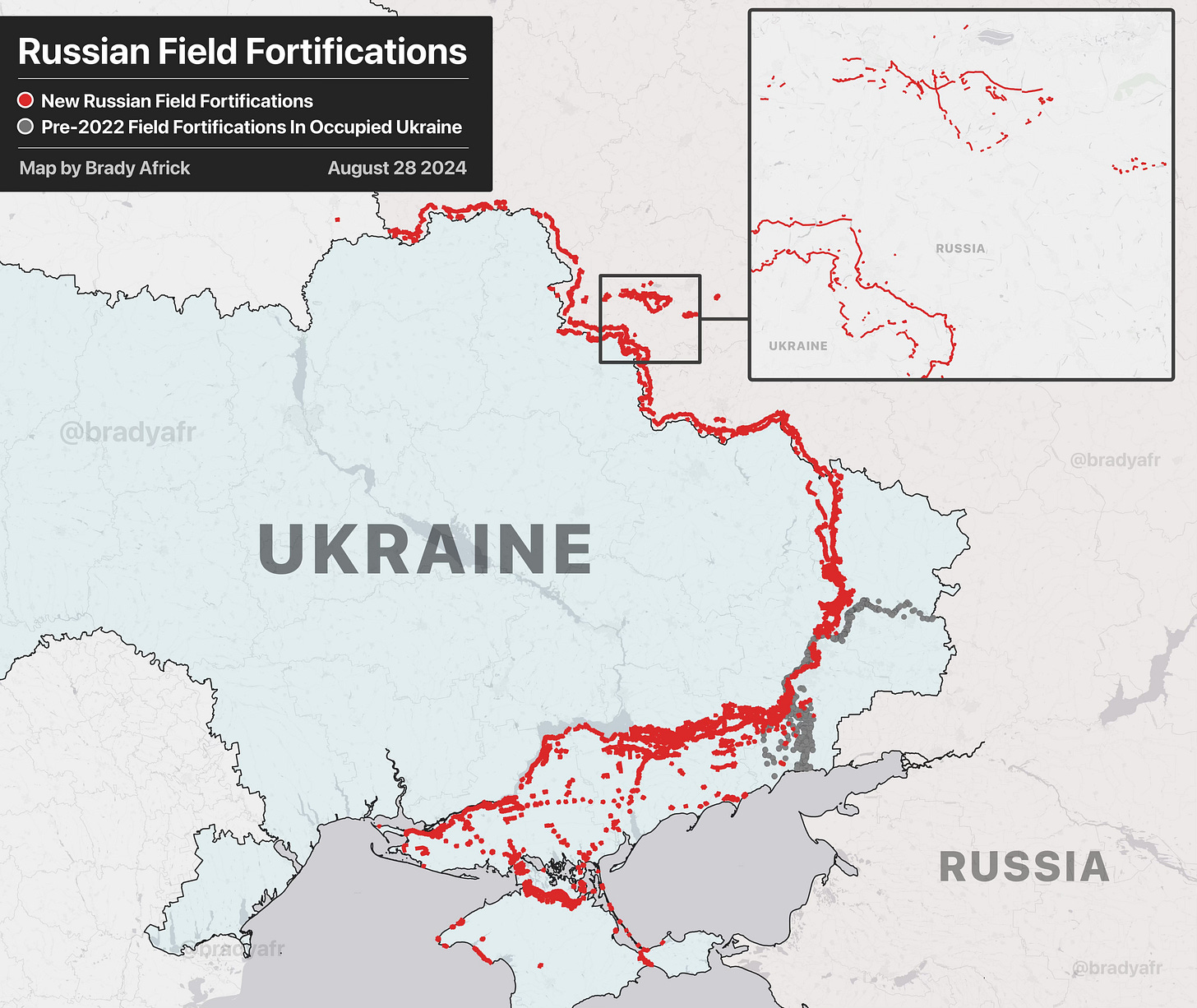
To wrap up coverage of Ukraine taking the war into Russia, Sir Lawrence Freedman published an excellent piece this week that explores the political and strategic implications of Ukraine’s attack into Kursk, and what the Kursk offensive means for the overall Ukrainian approach to the war. As he writes in the article, “the challenge for Ukraine if it wants to demonstrate that it has a strategy for victory is to pull these threads together and show how they add up to a coherent whole.” You can read the full piece here.
Interestingly, this week President Zelenskyy indicated that Ukraine did indeed have a ‘victory plan’ and that he would be briefing the plan to President Biden next month. Developing a viable ‘theory of victory’ is harder than many assume. It must balance domestic and international political concerns, as well as resourcing, influence operations by the enemy and an array of other factors. I explore the topic of a Ukrainian theory of victory in my new book, The War for Ukraine. I have also included the links to three recent useful articles on this topic. You can read them here, here and here.
In Ukraine, two key developments are worth noting. First, the news on the ground in eastern Ukraine is not good. The Russians continue to grind out their advance towards the regional centre of Pokrovsk. While the rate of advance is nowhere near as impressive as Ukraine’s rate of advance in the first week of its Kursk campaign, the Russians are nonetheless now within striking distance of the city.
Analyst @Tatarigami published a good assessment this week of why Pokrovsk is an important regional logistic hub for Ukraine and a key link in the defensive chain of cities in the Donbas. He notes in a recent post that “the situation in Pokrovsk is indeed severe but far from hopeless. Ukrainian command has the resources needed for stabilization, though this will require difficult and potentially unpopular decisions.” You can read the @Tatarigami assessment on the situation on the Pokrovsk front here.
While the Pokrovsk axis of advance may be its main effort, Russia also continues to advance in other parts of eastern Ukraine. As the daily report from the Centre for Defence Strategies notes, in just the past 24 hours, “on the Lyman direction, Ukrainian forces halted 14 enemy assaults near Hrekivka, Druzhelyubivka, Novosadove, Makiivka, Nevske, and Novoyehorivka. On the Siversk direction, five attacks were repelled near Bilohorivka, Spirne, and Verkhniokamyanka. On the Kramatorsk direction, Ukrainian troops thwarted 11 Russian attempts to breach defenses near Hryhorivka, Ivanivske, Bila Hora, Klishchiivka, and Andriivka. The enemy made 21 attempts to advance on the Toretsk direction.”
Russia also conducted a massive aerial assault against Ukrainian targets this week. Employing 127 missiles and 109 attack drones, the strike hit targets in multiple locations throughout Ukraine and multiple people. Interestingly, one of the targets was the Kyiv Hydroelectric Power Plant that is adjacent to the Kyiv dam. While breaching dam does not appear to have been the aim, it does send an ominous signal. Russia followed up this massive aerial attack 24 hours later with a smaller attack using 60 drones and 5 missiles, and a third attack on the 29th of August.
President Zelenskyy stated that Ukraine had deployed its new F-16 fighter jets to intercept drones and missiles in Russia’s recent attacks. Unfortunately these operations also saw the loss of one F-16 and its pilot, Lieutenant Colonel Oleksiy “Moonfish” Mes. Vale Moonfish.
The Donbas remains Russia’s main effort overall. This is not just a military orientation. The Russian Donbas campaign, along with the air and missile attacks against Ukrainian infrastructure, is a political signal from Putin that he is far more committed to hurting Ukraine and its citizens, and achieving his strategic goal of destroying Ukrainian sovereignty, than he is in defending his own people and protecting Russia’s sovereignty in Kursk (or his own energy infrastructure).
In the Pacific, as always, there is a lot going on.
The Chinese this week continued their ‘strategic thuggery’ against one of their favourite targets, the courageous Philippinos. This week, Manila accused Chinese vessels of ramming and using water cannons near Sabina shoal against a Philippine fisheries vessel transporting food, fuel and medicine for Filipino fishermen. There is a long history of the Chinese engaging in this behavour.
China claims sovereignty over most of the South China Sea (perhaps we should rename this body of water). This includes areas claimed by the Philippines, Brunei, Malaysia, Indonesia, Vietnam and Taiwan. An international tribunal in 2016 ruled that China's claim had no basis under international law, a decision which Beijing has rejected and ignored.
In other news from the Pacific, in the past week, USAF B-2 Spirit stealth bombers deployed to Australia in support of the Bomber Task Force mission in the Pacific theatre. The basing of B-2 bombers out of Australia provides a relatively secure deployment location, and another axis of attack against China should it choose to engage in military agression in the region. Some terrific images from the deployment were published, a couple of which are below.
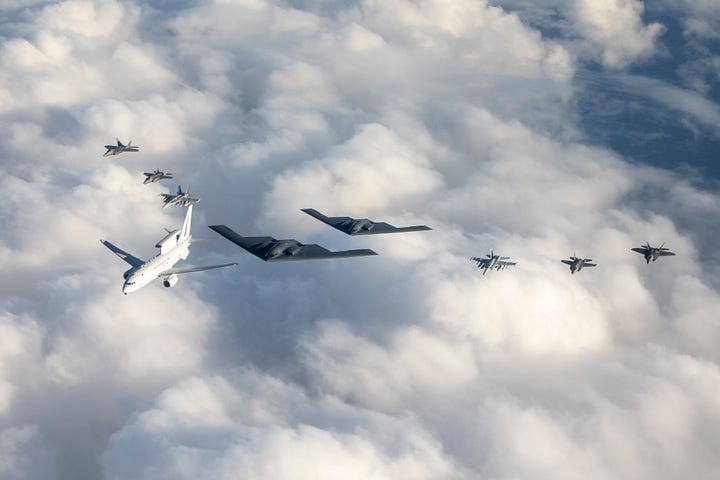
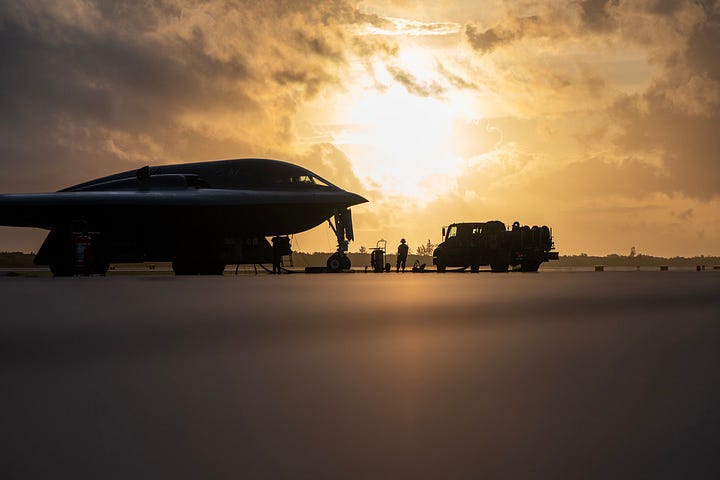
Also this week, a People’s Liberation Army Y-9 surveillance aircraft entered Japanese airspace early on Monday. The intelligence gathering aircraft flew over the uninhabited Danjo Islands in the East China Sea. This was the first time that a Chinese surveillance aircraft violated Japan’s airspace in this manner. This kind of aggressive and unnecessary behaviour shows exactly why Japan is beefing up its military capabilities. I have previously highlighted Japan’s new military strategy in The Big Five, but you can read their 2024 Defence Annual Update, which is full of useful information, here.
This week I published three articles.
The first was published here and reviewed the strategic lessons of Ukraine’s Kursk campaign. The second, published at Engelsberg Ideas, explores how Ukraine surprised the West with its Kursk campaign and how strategic timidity in Western thinking and action is part of why this surprise was possible. Finally, I published a op-ed in the Sydney Morning Herald that explored the rationale for the Ukrainian Kursk attack and why it matters to Western decision makers. You can read that piece here (paywall).
Finally, let’s turn to this weeks readings…
For the recommended readings this week, I have a Pacific theme. Two of the articles cover topics related to the Pacific theatre including Taiwan’s potential lessons from Ukraine and China’s naval build up. I have also included two interesting articles on weapons of mass destruction: nuclear and biological. Of course, these are also relevant to the Pacific theatre given China’s expansion of its nuclear arsenal and the likelihood that it possesses a biological weapons program. Finally, I have included an excellent article from Dr Frank Hoffman that explores alternative scenarios for the war in Ukraine.
As always, if you only have time to read a single article, the first one below is my article of the week.
Happy reading!
1. Chinese Naval Expansion
The latest update on China’s naval modernisation was released recently by the Congressional Research Service (CRS). A consistently good source of research and analysis about a range of national security issues, the new report notes that “China’s naval modernization effort encompasses a wide array of ship, aircraft, weapon, and C4ISR (command and control, communications, computers, intelligence, surveillance, and reconnaissance) acquisition programs, as well as improvements in logistics, doctrine, personnel quality, education and training, and exercises.” This is a very comprehensive report which also compares Chinese naval power with that of the U.S. You can read the full report from the CRS here.
2. On Nuclear Strategy
This is a useful and timely piece that re-examines nuclear doctrine in the wake of the Russian invasion of Ukraine and China’s expanding nuclear arsenal. As the author notes, “almost 70 years after their ascendancy, the risk of the use of nuclear weapons in conflict seems larger than ever.” While we may have forgotten these weapons still exist during the days of counterinsurgency operations in Iraq and Afghanistan, Putin’s nuclear sabre rattling and China’s increased investment in nuclear capabilities is resulting in a greater attention to curbing the likelihood that these weapons are used in future. You can read the full article here.
3. Ukraine Lessons for Taiwan
While the headline here that “Ukraine has profoundly changed the nature of modern conflict” is an overstatement and an over simplification of some of the changes to the character of war seen in Ukraine, this is a useful article that explores what some of the lessons that Taiwan might take from the war in Ukraine. You can read the full article here.
4. The Future of Ukraine
Frank Hoffman begins this outstanding piece noting that “wise leaders recognize that history does not follow a fixed linear path, and that the greater the uncertainty, the greater the value of examining alternative futures.” He then lays out four different scenarios and their potential impacts on the ongoing war in Ukraine and Russia. I always find these kinds of intellectual exercises interesting and useful - they help us consider different options, and understand different strategies. You can read the full article here.
5. Biological Warfare and the Future of Conflict
This is an excellent survey of developments in biological sciences of the past few years and what it means for deterring the development of new, advanced biological weapons. As the author notes, “a defining challenge for the twenty-first century will be whether the world can survive the emergence of these newer technologies, which promise to so transform civilization.” You can read the full article here.



